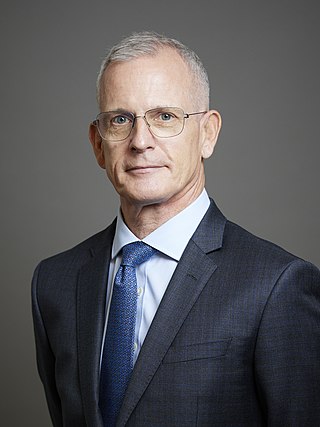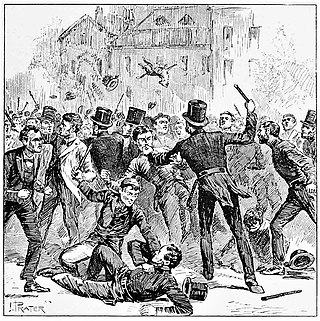Related Research Articles

Scotland Yard is the headquarters of the Metropolitan Police, the territorial police force responsible for policing Greater London's 32 boroughs. Its name derives from the location of the original Metropolitan Police headquarters at 4 Whitehall Place, which had its main public entrance on the Westminster street called Great Scotland Yard. The Scotland Yard entrance became the public entrance, and over time "Scotland Yard" came to be used not only as the common name of the headquarters building, but also as a metonym for the Metropolitan Police Service (MPS) itself and police officers, especially detectives, who serve in it. The New York Times wrote in 1964 that, just as Wall Street gave its name to New York's financial district, Scotland Yard became the name for police activity in London.

The Metropolitan Police Service (MPS), formerly known as the Metropolitan Police, which is still its common name, serves as the territorial police force responsible for law enforcement and crime prevention within the ceremonial county of Greater London. In addition, it is responsible for specialised tasks throughout the United Kingdom, such as UK counter-terrorism measures, and the protection of certain individuals, including the monarch, royal family, governmental officials, and other designated figures. Commonly referred to as the Met, it is also referred to as Scotland Yard or the Yard, after the location of its original headquarters in Great Scotland Yard, Whitehall in the 19th century. Its present headquarters are near there at New Scotland Yard on the Victoria Embankment.

Brian Leonard Paddick, Baron Paddick, is a British life peer and retired police officer. He was the Liberal Democrat candidate for the London mayoral elections of 2008 and of 2012, and until his retirement in May 2007 was a deputy assistant commissioner in the Metropolitan Police Service.

Ian Warwick Blair, Baron Blair of Boughton, is a British retired policeman who held the position of Commissioner of Police of the Metropolis from 2005 to 2008 and was the highest-ranking officer within the Metropolitan Police Service.

Dame Cressida Rose Dick is a former British police officer who served as Commissioner of Police of the Metropolis from 2017 to 2022. She is both the first female and first openly lesbian officer to lead London's Metropolitan Police Service.
Sir James William Olive KBE was Assistant Commissioner "A" of the London Metropolitan Police from 1920 to 1925. As such, he was in charge of administration and uniformed operations and was the Commissioner's deputy. From 1922, he became the first officer formally to be granted the title of Deputy Commissioner.
Sir Kenneth Leslie Newman was a senior British police officer. He was Chief Constable of the Royal Ulster Constabulary (RUC) from 1976 to 1980, and Commissioner of the Metropolitan Police from 1982 to 1987. He is best known for initiating a major reform and restructure of the Metropolitan Police during his tenure as Commissioner and for seeing the RUC replace the British Army as the dominant security force in Northern Ireland during his tenure as Chief Constable.

Jamshid Ali Dizaei is a former Commander in London's Metropolitan Police Service, Iranian-born with dual nationality, and formerly one of Britain's more senior Muslim police officers. Dizaei came to prominence as a result of his outspoken views on racial discrimination in the London Metropolitan Police and various allegations of malpractice on his part. He had received advancement after his criticism of the force following his claims of racism. He was a frequent media commentator on a variety of issues, mainly concerned with ethnicity and religion. In April 2008, he was promoted to Commander, responsible for West London.
Sir Joseph Simpson KBE KPFSM, commonly known as Joe Simpson to his officers, was Commissioner of Police of the Metropolis, the head of the London Metropolitan Police, from 1958 to 1968. He was the first Commissioner who began his police career as an ordinary constable.

Sir Stephen House is a British police officer who served as Acting Commissioner of the Metropolitan Police in 2022. After beginning his career at Sussex Police in 1981, House held positions in Northamptonshire Police and West Yorkshire Police, then became Assistant Chief Constable of Staffordshire Police in 1998. In 2001, he joined the Metropolitan Police as a Deputy Assistant Commissioner, remaining there until 2007, when he was appointed Chief Constable of Strathclyde Police.
The history of the Metropolitan Police in London is long and complex, with many different events taking place between its inception in 1829 and the present day.

The Metropolitan Police of Greater London, England is organised into five main directorates, each headed by an Assistant Commissioner, and four civilian-staffed support departments previously under the umbrella of Met Headquarters, each headed by a Chief Officer, the equivalent civilian grade to Assistant Commissioner. Each business groups or directorate has differing responsibilities. The commands are Frontline Policing, Met Operations, Specialist Operations and Professionalism.
Robert Alan Hunt was a senior British police officer. He served as Assistant Commissioner from 1990 to 1995 with responsibility for operations at all police stations throughout the Metropolitan Police Service.

The Balcombe Street siege was an incident involving members of the Provisional Irish Republican Army (IRA) and London's Metropolitan Police lasting from 6 to 12 December 1975. The siege ended with the surrender of the four IRA members and the release of their two hostages. The events were televised and watched by millions.
Sislin Fay Allen, known as Fay Allen, was a British and Jamaican police officer who was the first black woman police constable in the United Kingdom, serving in the Metropolitan Police in London from 1968 to 1972. She also worked for the Jamaica Constabulary Force.
Norwell Lionel Roberts is a British former police constable—the first black police officer to join London's Metropolitan Police. He eventually rose to the rank of Detective Sergeant. During his career, he was considered to be the first black police officer in the United Kingdom, although it has since been discovered that he had been preceded by Metropolitan Police Superintendent Robert Branford and Constable John Kent in Carlisle, both in the 19th century.

The Railway Viaduct is the third title in the Railway Detective series of detective mystery novels written by Keith Miles under the pseudonym Edward Marston. Set in 1852, it is about a murder on a train which is investigated and ultimately solved by two Scotland Yard detectives, Inspector Robert Colbeck and Sergeant Victor Leeming. The title place is the Sankey Viaduct on the former Liverpool and Manchester Railway. The novel was published in 2006 by Allison & Busby of London. The graphic on the book cover is from T. T. Bury's 1831 depiction called Viaduct across the Sankey Valley in his Liverpool and Manchester Railway series of paintings. According to the publishers in a 2018 news release, the series has been optioned for television adaptation by Mammoth Screen.
Gurpal Singh Virdi is a former local councillor for the London Borough of Hounslow between May 2014 and May 2018, previously serving for the Metropolitan Police from 1982 as the first officer from Asian descent from Hounslow to join the police force. Virdi retired from the Metropolitan Police in 2012 following what he described as institutional racism and discrimination within the Police Force.
Leroy Hugh Logan is a former police superintendent in the UK. He was both a founding member of the Black Police Association and its chairman for 30 years.

The Coldbath Fields riot took place in Clerkenwell, London, on 13 May 1833. The riot occurred as the Metropolitan Police attempted to break up a meeting of the National Union of the Working Classes (NUWC). Figures for the number of police present at the varied between 70 and 600 officers; figures for members of the public who attended varied between 300 and 6,000. Both Commissioners of Police of the Metropolis, Sir Charles Rowan and Sir Richard Mayne, were present and two British Army officers stood by to summon military reinforcements if needed. It is disputed which side started the violence, but Rowan led a number of baton charges that dispersed the crowd, and arrested the NUWC leaders. The crowd were pursued into side streets and a number were trapped in Calthorpe Street. Three police officers were stabbed and one, Constable Robert Culley, was killed. There were few serious injuries inflicted on members of the public.
References
- ↑ "The Met's first black officer who rose through ranks to become superintendent - in 1856". Southwark News. Retrieved 2022-05-30.
- ↑ "Trailblazing black Metropolitan Police officer Robert Branford remembered, 200 years on". www.churchtimes.co.uk. Retrieved 2022-05-30.
- ↑ Cavanagh. (1893). Scotland Yard, Past and Present Experiences of Thirty-Seven Years. London: Chatto & Windus. OCLC 1155249897.
- ↑ "Historian hopes the story of a mixed-race policeman in Victorian Southwark will inspire new generation of black officers". Southwark News. Retrieved 2022-05-30.